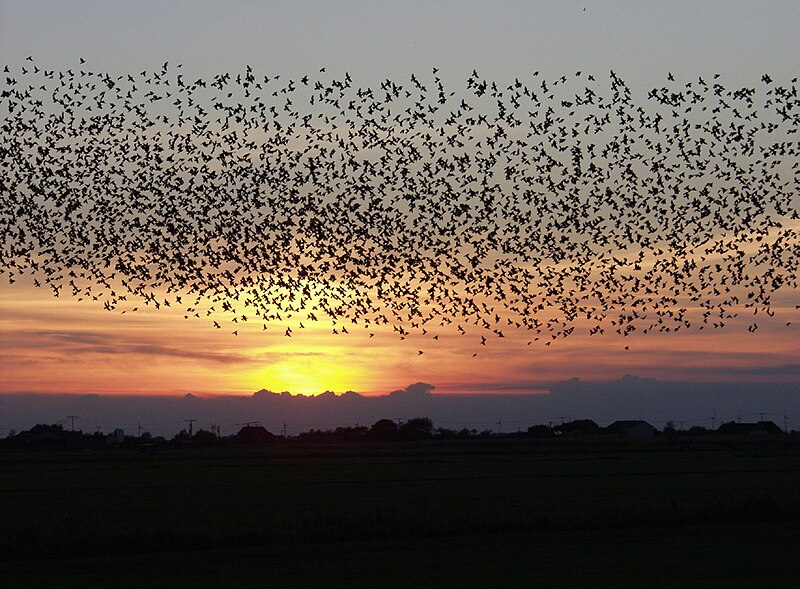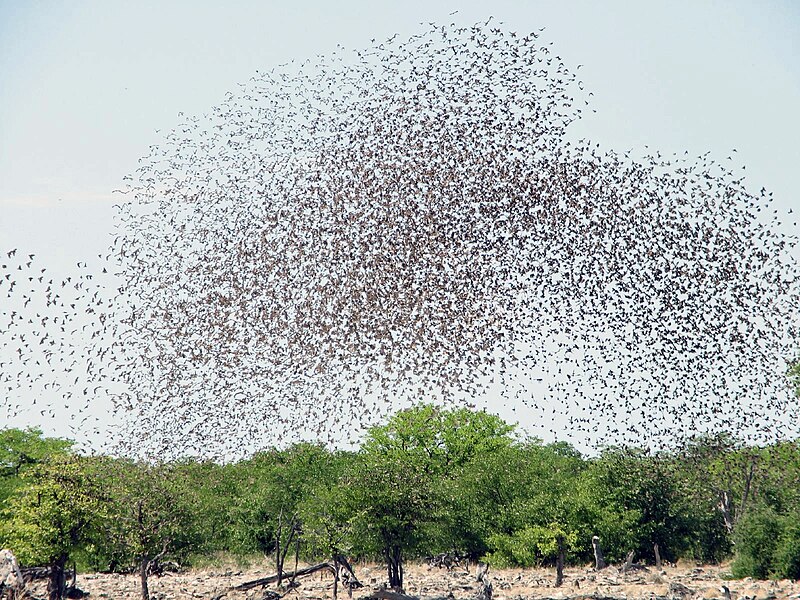 Who hasn’t marveled at the way bird flocks seem to move as a single organism? Groups ranging in size from a dozen Zebra Finches to millions of Budgerigars change direction with astonishing fluidity and speed, confusing predators and leaving observers to wonder just how they mange to accomplish such feats.
Who hasn’t marveled at the way bird flocks seem to move as a single organism? Groups ranging in size from a dozen Zebra Finches to millions of Budgerigars change direction with astonishing fluidity and speed, confusing predators and leaving observers to wonder just how they mange to accomplish such feats.
Flexible Leadership
While birding in deserts, grasslands and other open habitats that allowed long, clear views of large flocks, I’ve tried, unsuccessfully, to determine if it was a single leader “calling the shots” or some sort of unobservable group dynamics at work.
Recently, researchers at Oxford and Eotvos Universities have provided part of the answer, at least where pigeons are concerned. Research published in the April, 2010 edition of the journal Nature, establishes that pigeons use flexible hierarchy system to make group decisions (direction of travel, choice of feeding site, etc.).
“Avian Democracy”
 While certain members of the flock are more likely to lead than others, each individual’s role can change over time, and even the lowest ranking birds have some “say” in the decision-making process. This system of flexible, layered leadership seems to work very well for pigeons, and may be utilized by other flock-traveling species as well.
While certain members of the flock are more likely to lead than others, each individual’s role can change over time, and even the lowest ranking birds have some “say” in the decision-making process. This system of flexible, layered leadership seems to work very well for pigeons, and may be utilized by other flock-traveling species as well.
Further research will attempt to discover how and why the flock gives greater weight to the input of one bird over another; for example, is an individual’s role based upon experience, proven navigation skills, aggression or other qualities?
Further Reading
Pigeons are useful models for studying bird behavior and biology; recent work at Keio University has revealed that the self-recognition abilities of pigeons exceed those of the average 3-year-old child!
An interesting video on flock dynamics is posted here.
Red billed Quelea Flock image referenced from wikipedia and originally posted by Alastair Rae and Sabine’s Sunbird
 That Bird Blog – Bird Care and History for Pet Birds
That Bird Blog – Bird Care and History for Pet Birds



